Your cart is currently empty!
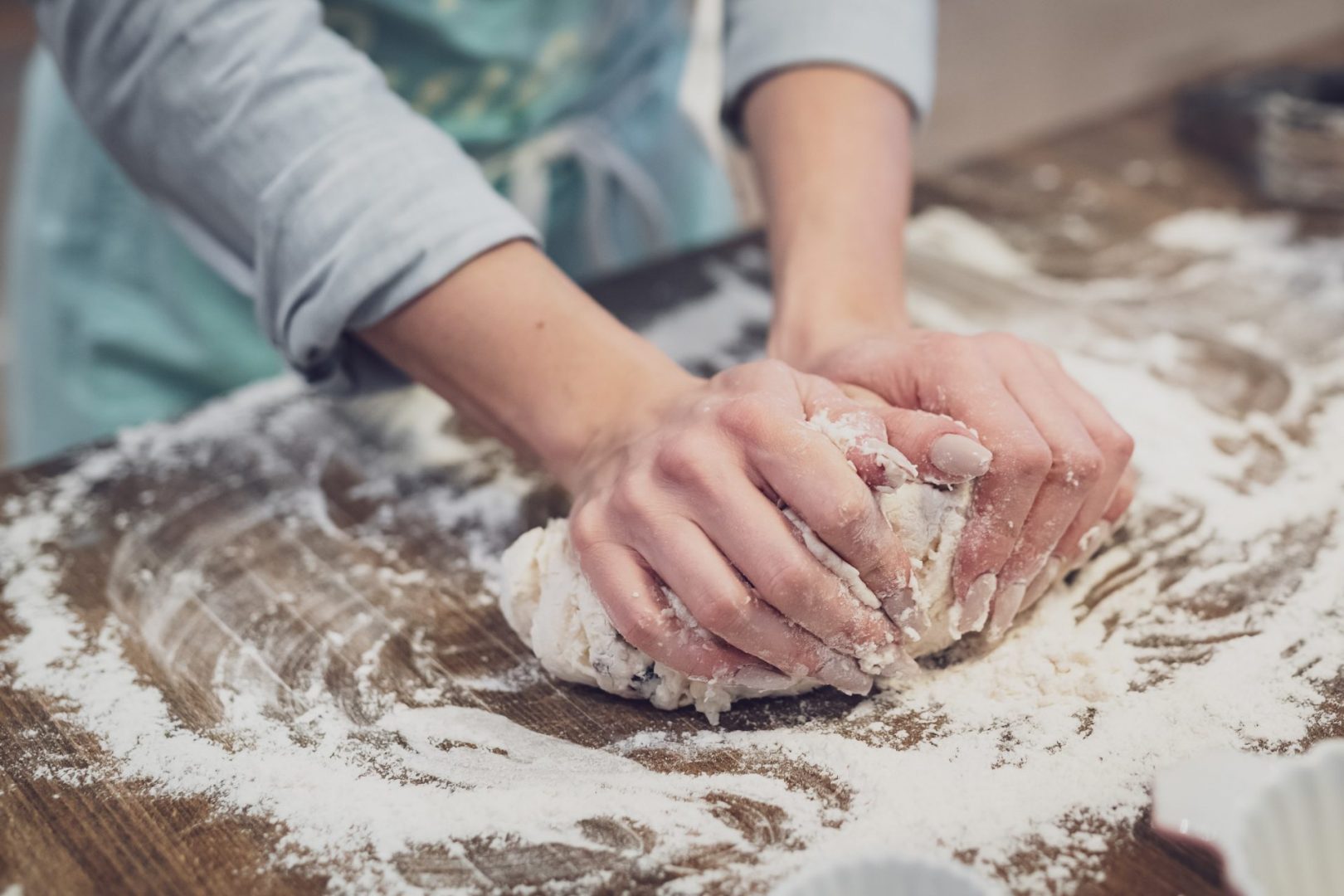
Cornish Picnic Recipes
Join us for a collection of our favourite Cornish picnic recipes. Perfect for any adventure, beach day or after a day exploring. Let us know what becomes your favourite recipe!
Cornwall. A place known for its wonderful food – mostly of the pastry and sweet kind. Cornwall is built upon the tradition of family baking which is something we bring with us in everything we do. In this blog we talk through some of our favourite traditional Cornish recipes which are great for the family and to pop in your backpack for a day out.
We hope you can understand that this article does not include a pasty – We felt this would deserve a post all on its own!
Cornish Splits
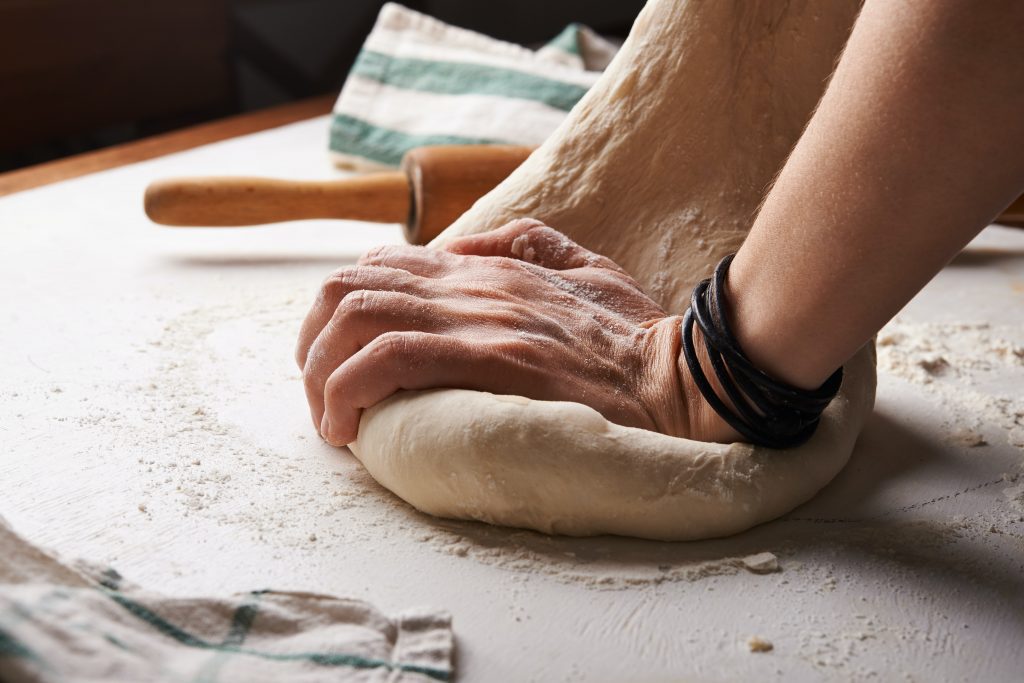
A great place to start is surely something you can use for anything – the traditional split. This deliciously sweet bun is used traditionally as an alternative to a scone. Now, this is something I remember making in the farmhouse with my Granny – batches warming in the Rayburn and the whole house smelling of warm bread. We used to tear into them and eat with butter. However, the Cornish folk among you will know that the split is best enjoyed with lashings of clotted cream and golden syrup, otherwise known as the ‘Thunder and Lightning’.
Ingredients
Strong flour – about 450g
Plain white flour – about 110g
Sugar – just a teaspoon!
Salt – a pinch
Yeast – about 14g of dried yeast or double if using fresh
Butter – preferably Cornish and about 85g
Milk – nice and warm, about half a pint
Method
Mix together the yeast and sugar and then add this to the nicely warmed milk. In a separate bowl rub together the butter and flour (sieved if you can). Then add the liquid slowly to the flour and butter mix till you have a dough. Knead this and set it aside until it’s doubled in size. Ideally, you’ll want to knead this again and then form it into buns. The size of the buns is up to you but this recipe will make about 16.
Leave these buns to prove again until doubled and place in a preheated oven at about 175 degrees for 20 minutes or so. Serve as you like!
Cornish Hevva Cake
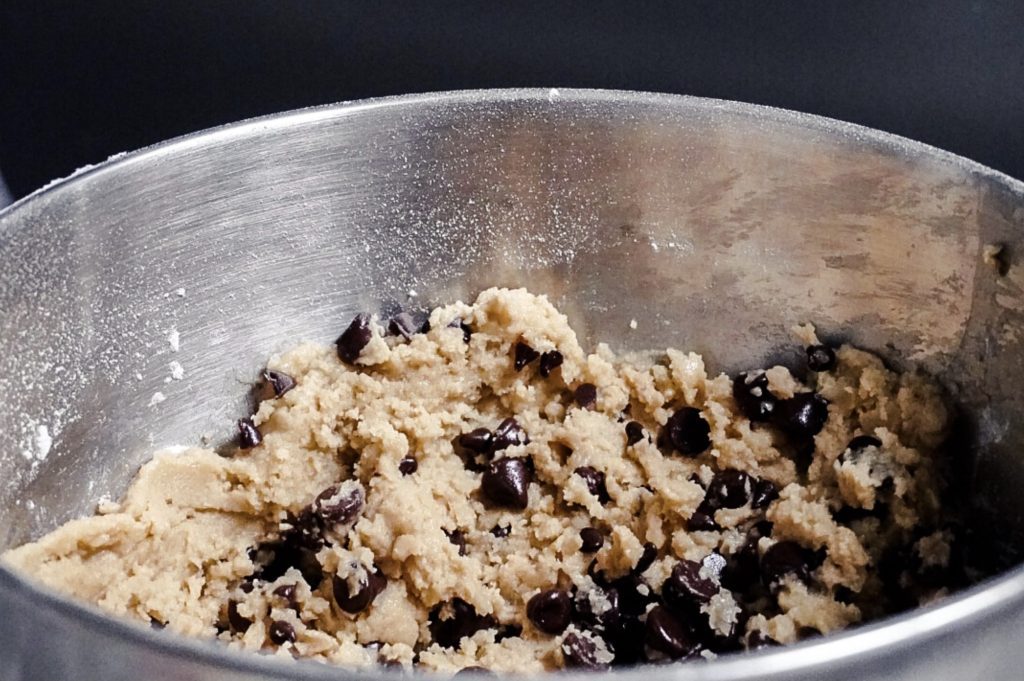
A personal favourite of mine. This is often called ‘Heavy cake’ which was traditionally made by fisherman wives as a welcome home to their Husbands after successful fishing trips. It’s not actually heavy and is sort of like fruit cake but also not really. This recipe is quite unique. It’s crumbly deliciousness is enjoyed best with a pot of tea.
This is a Cornish recipe adapted over time for sure. This is something my Mum made all the time and honestly, she never followed a recipe. She just knew when it was right! We used to eat this hot out of the oven, the sugary top almost burning your mouth but the sweet hot sugar smell was just too irresistible. I’ve created a recipe for you all but use your instincts on this one!
Ingredients
Plain flour – about 350g
Salt – a pinch
Butter – about 75g, at room temperature
Lard – the same as the butter
Castar sugar – white or golden. 100g plus extra for sprinkling
Currants/ sultanas – 150g
Milk – 100ml
You can use baking powder in this recipe too if you like, by the teaspoon, which I’d add in with the flour.
Method
Rub together the butter, flour and salt with your fingertips until it looks like breadcrumbs – the fun bit right! To bake like my Mum leave chunks of butter and lard in the mix of an ultra yummy, buttery bake.
Then add in the sugar and currents and mix together until combined. Pour in the milk and stir until you have a nice thick dough.
Place the dough on a sheet of baking paper and use your fingertips to push it out to the corners – it’s very crumbly! Score a fishing net into the top with a knife and pop in the oven for about half an hour till browned on the top. Sprinkle with sugar as you pop it in the oven and serve warm.
Saffron buns
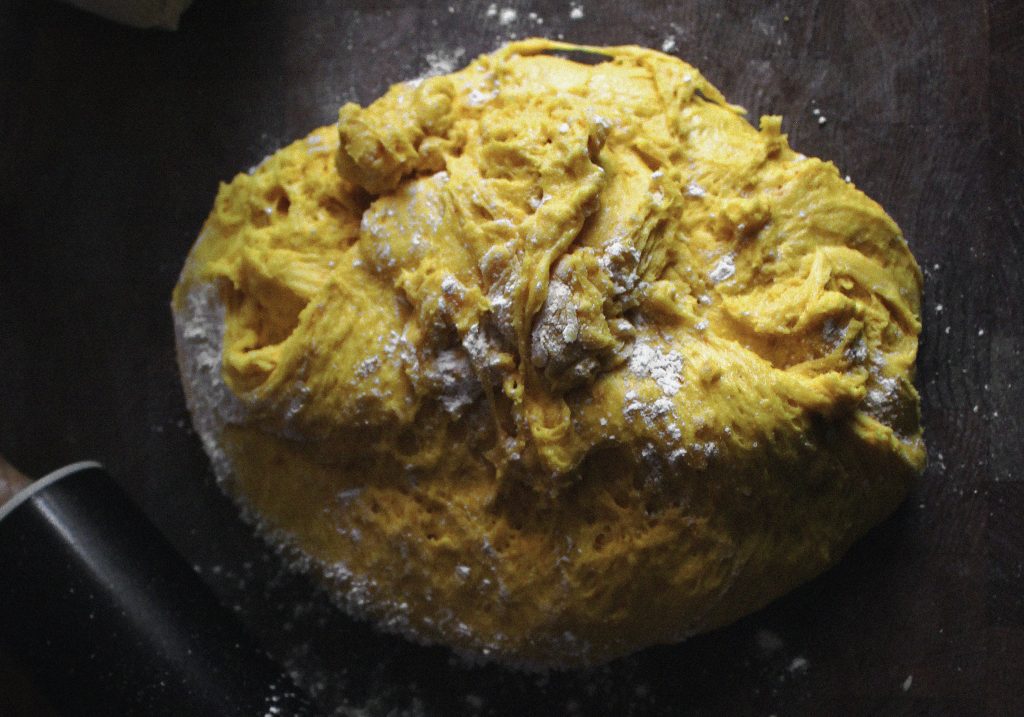
Saffron buns are something I remember coming in bag fulls from my Granny’s house. Honestly, best eaten warm and by themselves because they are so yummy – or with butter if you like. They are a bun of a beautiful orange colour. A big credit here goes to the beautiful spice, Saffron, which used to be grown in Cornwall – and is of course the inspiration for this recipe and lots more.
Ingredients
Strong flour – about 550g and sieved if you can
Milk – 300ml
Butter – 50g at room temperature
Salt – a pinch
Castar sugar – golden is best, about 50g plus extra to glaze
Yeast – about 7g if using dried
Raisins – about 70g
Mixed peel – about 35g
Saffron – a tiny amount! About 0.5g
Feeling fancy? Add in clotted cream, less the 100g
Method
Warm the milk in a saucepan, crumble in the saffron and stir. Next, add in the butter (and cream if using) and stir until melted. Pop this aside and leave the spices to infuse. About 20-30 minutes. It will then go that beautiful yellow colour.
In a separate bowl add the flour, sugar, salt and yeast and combine. Make a little well in the middle and slowly add in the milk. Knead this together for a couple of minutes and add in those raisins and peel! Knead again for five minutes until you have a lovely bouncy dough.
Leave this covered in a warm place for about an hour – it should double in size. Turn the dough out onto a floured table and knock the air out of it. Then knead again for a couple of minutes before dividing into even pieces. This will make about 10. Roll each into a ball and pop it onto a baking sheet. Use two sheets if you haven’t got space. Cover again and leave to rise for about half an hour.
Bake the buns for about 20 minutes in a preheated oven – about 200 degrees – until golden and risen.
To glaze them dissolve the extra sugar in about three tablespoons of water until you have a nice syrup. Brush the buns with the glaze when out of the oven.
Tradional Cornish scone
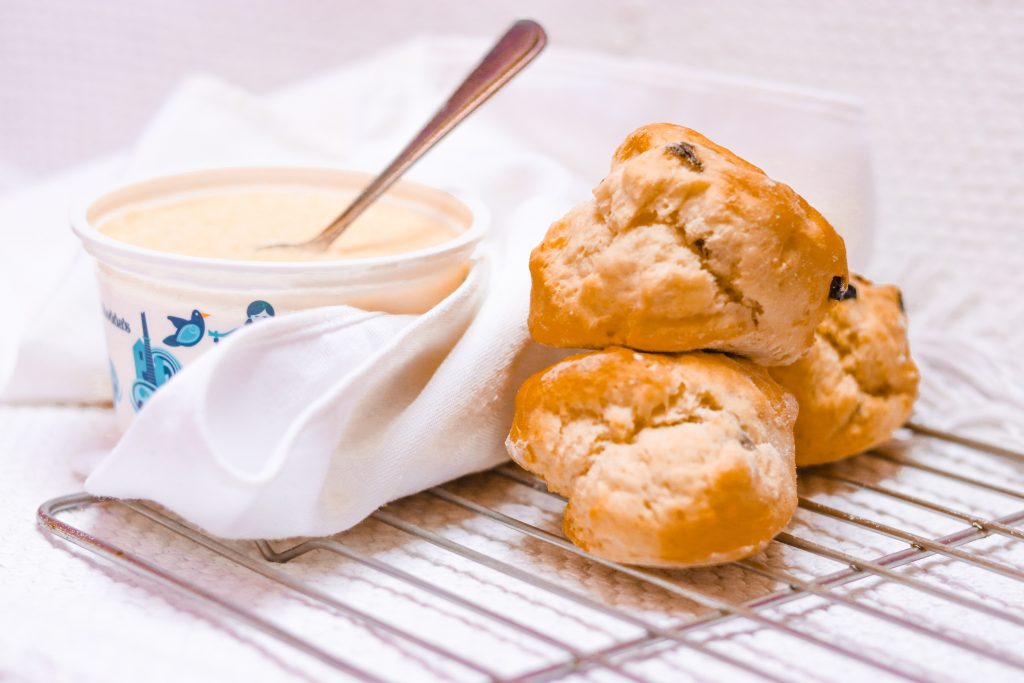
Need we say more? Best served fresh and warm with jam (on first) and clotted cream. However, these are perfect halved, buttered and popped in a lunchbox for a picnic. They are versatile and a great way to experiment – add fruits or chocolates or cheese, whatever takes your fancy.
Ingredients
Plain flour – 500g and sieved if you can
Baking powder – 15g
Salt – a pinch
Caster sugar – 100g
Butter – at room temperature and diced, 100g
Milk – about 250ml
One egg- beaten
Method
Add together the flour, baking powder, sugar and salt. Using your fingertips, rub the diced butter into the flour until it looks like fine breadcrumbs and then add in the milk slowly until it comes together. Turn this out onto a floured table and knead really gently until you have a smooth dough. When ready, roll out your dough and cut into rounds – about 5cm round but I often just use a mug. Pop these onto a lined baking tray and egg wash.
Bake for about 15 minutes at 200 degrees.
Cornish Fairings
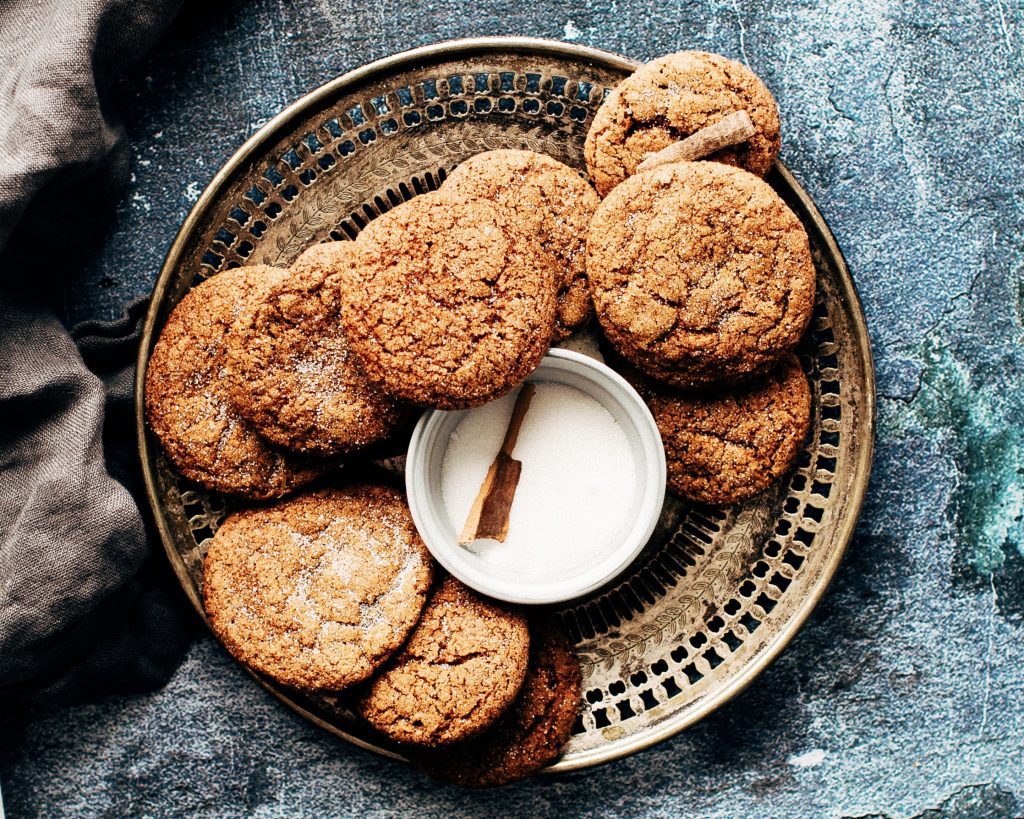
A Cornish Fairing is a traditional Cornish ginger biscuit found in probably every local gift shop you can find but why not make your own? I enjoy these with a glass of warm, spiced milk or a pot of tea. If you’re looking for an extra special dessert these make a brilliant cheesecake base!
Ingredients
Butter – room temperature, 100g
Caster sugar – golden if you have it, 100g
Golden syrup – a couple of tablespoons
Self-raising flour – 175g
Ginger – a couple of teaspoons
Mixed spice – half a teaspoon
Cinnamon – half a teaspoon
Bicarb of soda – half a teaspoon
Salt – a pinch
Method
Melt together the butter, sugar and syrup in a pan over a nice low heat. In a separate bowl sift in the flour, bicarb, salt and spices. For the next step, tip the butter mixture into the dry ingredients and stir until you have a nice smooth dough. Place heaped teaspoonfuls onto baking sheets, spread out to allow the biscuits to spread, and flatten a little with a knife.
These biscuits are best baked for 8-10 minutes at 180 degrees until golden brown and allow to cool on the baking tray for a few minutes so they harden. Enjoy!
Baking Conclusion
We hope you enjoy our favourite traditional baking recipes. Here are Cornish and Cosy we love nothing more than a day out or mini adventure and each recipe helps bring that little bit of Cornwall with you, whatever your adventure may take you.
What is your favourite Cornish recipe? We would love to hear your thoughts! Please very free to share your own take on these Cornish recipes or add your own!
Leave a Reply